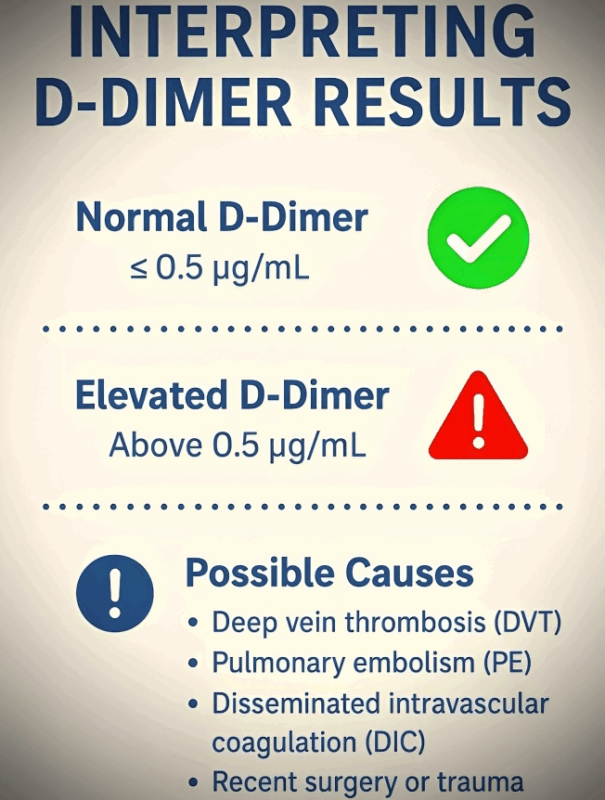
Samuel Nweke/LinkedIn
Oct 21, 2025, 06:58
Samuel Nweke: Interpreting D-Dimer Results
Samuel Nweke, Deputy Lab Manager and Chairman of Quality Management Team at Malens Diagnostics, shared on LinkedIn:
”Interpreting D-Dimer Results
- High risk of DVT + High D-dimer → confirm DVT with Doppler ultrasound
- High risk of PE + High D-dimer → confirm PE with CT pulmonary angiography (CTPA)
- High D-dimer + signs of DIC → suggests systemic clotting → perform coagulation profile and platelet assay
Hint:
- Deep Vein Thrombosis (DVT) – D-dimer is often >1.0 μg/mL FEU.
These are clots in deep veins, mostly in the legs, causing swelling, pain, and warmth. - Pulmonary Embolism (PE) – D-dimer is often >1.0 μg/mL FEU.
A clot travels to the lungs, causing
Disseminated Intravascular Coagulation (DIC) (D-dimer is markedly elevated, sometimes >10 μg/mL)
This is a severe condition presenting with signs and symptoms such as:
- Oozing from venipuncture or IV sites (classic early sign)
- Bleeding from gums or nose
- Prolonged bleeding after injections or surgery
- Hematuria (blood in urine)
- Gastrointestinal bleeding (vomiting blood, blood in stool)
- Petechiae and ecchymoses (tiny or large bruises on the skin)
- Heavy vaginal bleeding (especially postpartum)
DIC is seen in sepsis, trauma, cancer, or obstetric complications.
Laboratory Findings in DIC:
- Platelet count: decreased → platelet consumption
- PT (Prothrombin Time): prolonged → factor depletion
- aPTT (Activated Partial Thromboplastin Time): prolonged → factor depletion
- Fibrinogen: low → consumed during clotting
- D-dimer: high → indicates fibrinolysis (breakdown of clots)
- Peripheral smear: schistocytes (fragmented red blood cells).”

Stay updated with Hemostasis Today.
-
Dec 6, 2025, 18:02ASH25 Day 1: Don’t Miss The Highlights
-
Dec 6, 2025, 15:44Atul Gupta on Where The Healthcare Innovation is Headed
-
Dec 6, 2025, 15:22Nathan White on How Inflammation Contributes to Coagulopathy After Trauma
-
Dec 6, 2025, 15:02Anas Younes on AstraZeneca’s Aims in Blood Cancer to Be Presented at ASH25
-
Dec 6, 2025, 14:08David Alderman: ASH25 is Live
-
Dec 6, 2025, 13:53Isabelle Mahé Presents The Proposals from INNOVTE CAT Working Group
-
Dec 6, 2025, 11:50Steve Tuplin on Roche’s Mission at ASH25
-
Dec 6, 2025, 11:13Khaled Musallam on The Lancet Haematology Podcast: Your ASH25 Roadmap
-
Dec 5, 2025, 03:46Sreeni Sivan Pillai: Preventing Thrombophlebitis and Upper Limb DVT in PICC Lines
